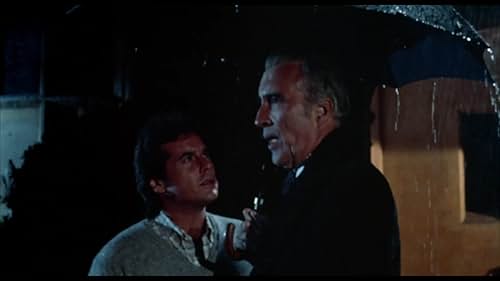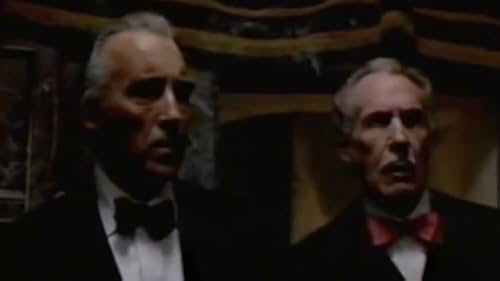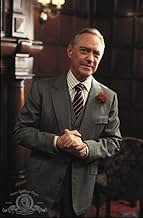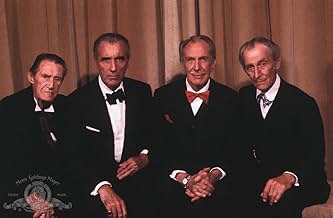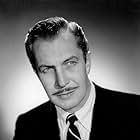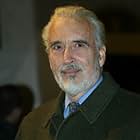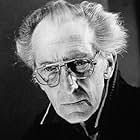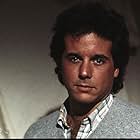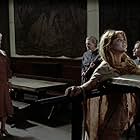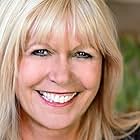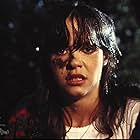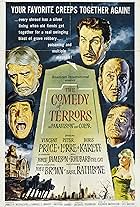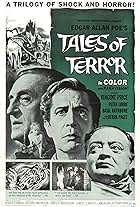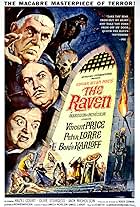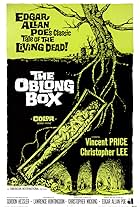IMDb RATING
6.2/10
4.9K
YOUR RATING
An American author finds a dilapidated Welsh manor perfect for writing until the residents host a bizarre family reunion.An American author finds a dilapidated Welsh manor perfect for writing until the residents host a bizarre family reunion.An American author finds a dilapidated Welsh manor perfect for writing until the residents host a bizarre family reunion.
- Awards
- 2 wins & 2 nominations
Desi Arnaz Jr.
- Kenneth Magee
- (as Desi Arnaz)
Juba Kennerley
- Gentleman's Club Member
- (uncredited)
- Director
- Writers
- All cast & crew
- Production, box office & more at IMDbPro
Storyline
Did you know
- TriviaThis is the 24th and final film in which Christopher Lee and Peter Cushing appeared together.
- GoofsThe main action takes place in "Bllyddpaetwr" (according to a railway station sign). The first and second letters would need to have a vowel between them for this to be an actual Welsh place-name.
- Quotes
Lionel Grisbane: Don't interrupt me while I'm soliloquizing.
- ConnectionsFeatured in Elvira's Movie Macabre: House of the Long Shadows (1986)
Featured review
Never turning up on television, long out of print on video, and never released to DVD, HOUSE OF THE LONG SHADOWS has fallen prey to neglect in recent times. To a degree, this is understandable; taken purely on its own, HOUSE at first seems to emerge a bit disappointing today. The oft-cited problem is that the four horror stars seem painfully marginalized in order to make way for Desi Arnaz Jr. But, when seen in a larger context, HOUSE rises far above its humble origins and becomes something much greater than the sum of its parts. Much like James Whale's THE OLD DARK HOUSE - a film that shares much in common with HOUSE - it is a film that requires multiple viewings to fully appreciate.
Just as Universal's Dracula of 1931 inspired and influenced a cycle of horror films that would grow, mature, mutate, and ultimately flounder in various forms till the late Forties, so too did another horror zeitgeist bloom during the late Fifties, Sixties and Seventies. The British studio that had produced 1957's groundbreaking THE CURSE OF FRANKENSTEIN, Hammer Films, found great success in the genre over the next twenty years, not infrequently making use of Christopher "Dracula" Lee and Peter "Frankenstein" Cushing. Meanwhile, in Hollywood, American International found their superstar in Vincent Price, whom they headlined in a series of literate, atmospheric Edgar Allan Poe adaptations, beginning with THE FALL OF THE HOUSE OF USHER in 1960. Eventually, this series too would cross the Atlantic. The popularity (and profitability) of these scare shows insured a legion of second-rate cheapness from various entities, many of which utilized Shakespearian actor and erstwhile Universal horror veteran John Carradine, who crept his arthritic way through such low-budgeters as GALLERY OF HORRORS and BLOOD OF DRACULA'S CASTLE.
But, by 1982, this cycle of traditional horrors had seemingly come to a dead end. Hammer and AIP were no longer producing feature films, and most of the great horror stars of the time were now electing to either shoot for mainstream success or a semi-retirement save for the occasional film and television cameo appearance. As the Eighties dawned too, the genre was foregoing Gothic horror in favor of the summer camp bloodbath, the holiday massacre, and the dream-slaying slasher. In the midst of these gruesome developments however, director Pete Walker, not unfamiliar with bloody subject matter himself, decided to provide the old-fashioned approach one last go-around, and gather the very icons of that style to do it.
The plot is old humbug, another revitalization of Earl Derr Bigger's old standard Seven Keys to Baldpate, which had been filmed a number of times before. Jaded novelist Arnaz accepts a bet from his impish publisher (Richard Todd), which involves him spending 24 hours in an old Welsh mansion and writing a Bronte-like Gothic story. As the stormy night progresses, various dodgy characters turn up who, as it emerges, are all members of the benighted Grisbane family, gathered on this night to release a horrible secret in the attic. Before long, various unwary visitors - as well as the Grisbanes themselves - begin to be murdered in grisly ways by a mysterious psychopath. Many twists and turns later, the narrative works its way toward a lighthearted conclusion.
There had long been plans to unite the four horror superstars in one film, but scheduling conflicts had made it impossible. Finally, the opportunity arrived with this project, and all are well served by their roles here. Each is allowed to indulge in his particular acting persona. Price is flamboyant and theatrical, Lee imperious and sinister, Cushing genteel and sympathetic, Carradine sonorous and stentorian. Price in particular excels here, and this was his last real opportunity to shine in a full-fledged horror film. Though he would return to the genre two more times before his death in 1993, neither his embarrassing appearance as an expletive-spewing sorcerer in BLOODBATH IN THE HOUSE OF DEATH or his cantankerous turn hosting THE OFFSPRING can compare to his grandly overstated Lionel Grisbane. In particular, Lionel's pitched introduction at the doorway is unforgettable, a true highlight of horror cinema.
If there is a major regret here, it's that Cannon opted to re-cut the film for some theatrical showings - and that's the version released to VHS years ago. This move appears to have been done in order to play up the horror content and mute the comedy. Though I've never seen the original cut, it almost unquestionably would have been preferable. Both Price and Cushing seemed to feel so, and lamented the fact that many of the comic build-ups were left in, only to have the punch lines cut. The real loss was the original end credits sequences, in which each member of the cast steps out of character to take a final bow.
But, in the end, the shortcomings matter little. HOUSE stands as truly the last of its kind, and more than that, can be seen as the point of embarkation for a new style. Just as Universal provided the iconographic monsters of the Thirties and Forties with a peculiarly reverential send-off in ABBOTT AND COSTELLO MEET FRANKENSTEN, so too does HOUSE OF THE LONG SHADOWS allow its four veteran bogeymen of the Sixties and Seventies to gracefully bow out, in character and with their dignity intact. It's sublimely appropriate that the film should meld Eighties slasher/body-count horror themes (gruesomely accented ax murders, stabbings, acid baths, etc.) with the traditional Gothic approach these men specialized in; by taking part in those very situations themselves, Price, Lee, Cushing, and Carradine thereby "pass the torch" to the knife-wielding maniacs that would come to rule the genre in their place. Seen in this light, the film's faults seem to considerably melt away, and one realizes what a true, unique gem we have here. That is, a lighthearted but affectionate good-bye to twenty-five years of classic horror films executed with great deft and style.
Just as Universal's Dracula of 1931 inspired and influenced a cycle of horror films that would grow, mature, mutate, and ultimately flounder in various forms till the late Forties, so too did another horror zeitgeist bloom during the late Fifties, Sixties and Seventies. The British studio that had produced 1957's groundbreaking THE CURSE OF FRANKENSTEIN, Hammer Films, found great success in the genre over the next twenty years, not infrequently making use of Christopher "Dracula" Lee and Peter "Frankenstein" Cushing. Meanwhile, in Hollywood, American International found their superstar in Vincent Price, whom they headlined in a series of literate, atmospheric Edgar Allan Poe adaptations, beginning with THE FALL OF THE HOUSE OF USHER in 1960. Eventually, this series too would cross the Atlantic. The popularity (and profitability) of these scare shows insured a legion of second-rate cheapness from various entities, many of which utilized Shakespearian actor and erstwhile Universal horror veteran John Carradine, who crept his arthritic way through such low-budgeters as GALLERY OF HORRORS and BLOOD OF DRACULA'S CASTLE.
But, by 1982, this cycle of traditional horrors had seemingly come to a dead end. Hammer and AIP were no longer producing feature films, and most of the great horror stars of the time were now electing to either shoot for mainstream success or a semi-retirement save for the occasional film and television cameo appearance. As the Eighties dawned too, the genre was foregoing Gothic horror in favor of the summer camp bloodbath, the holiday massacre, and the dream-slaying slasher. In the midst of these gruesome developments however, director Pete Walker, not unfamiliar with bloody subject matter himself, decided to provide the old-fashioned approach one last go-around, and gather the very icons of that style to do it.
The plot is old humbug, another revitalization of Earl Derr Bigger's old standard Seven Keys to Baldpate, which had been filmed a number of times before. Jaded novelist Arnaz accepts a bet from his impish publisher (Richard Todd), which involves him spending 24 hours in an old Welsh mansion and writing a Bronte-like Gothic story. As the stormy night progresses, various dodgy characters turn up who, as it emerges, are all members of the benighted Grisbane family, gathered on this night to release a horrible secret in the attic. Before long, various unwary visitors - as well as the Grisbanes themselves - begin to be murdered in grisly ways by a mysterious psychopath. Many twists and turns later, the narrative works its way toward a lighthearted conclusion.
There had long been plans to unite the four horror superstars in one film, but scheduling conflicts had made it impossible. Finally, the opportunity arrived with this project, and all are well served by their roles here. Each is allowed to indulge in his particular acting persona. Price is flamboyant and theatrical, Lee imperious and sinister, Cushing genteel and sympathetic, Carradine sonorous and stentorian. Price in particular excels here, and this was his last real opportunity to shine in a full-fledged horror film. Though he would return to the genre two more times before his death in 1993, neither his embarrassing appearance as an expletive-spewing sorcerer in BLOODBATH IN THE HOUSE OF DEATH or his cantankerous turn hosting THE OFFSPRING can compare to his grandly overstated Lionel Grisbane. In particular, Lionel's pitched introduction at the doorway is unforgettable, a true highlight of horror cinema.
If there is a major regret here, it's that Cannon opted to re-cut the film for some theatrical showings - and that's the version released to VHS years ago. This move appears to have been done in order to play up the horror content and mute the comedy. Though I've never seen the original cut, it almost unquestionably would have been preferable. Both Price and Cushing seemed to feel so, and lamented the fact that many of the comic build-ups were left in, only to have the punch lines cut. The real loss was the original end credits sequences, in which each member of the cast steps out of character to take a final bow.
But, in the end, the shortcomings matter little. HOUSE stands as truly the last of its kind, and more than that, can be seen as the point of embarkation for a new style. Just as Universal provided the iconographic monsters of the Thirties and Forties with a peculiarly reverential send-off in ABBOTT AND COSTELLO MEET FRANKENSTEN, so too does HOUSE OF THE LONG SHADOWS allow its four veteran bogeymen of the Sixties and Seventies to gracefully bow out, in character and with their dignity intact. It's sublimely appropriate that the film should meld Eighties slasher/body-count horror themes (gruesomely accented ax murders, stabbings, acid baths, etc.) with the traditional Gothic approach these men specialized in; by taking part in those very situations themselves, Price, Lee, Cushing, and Carradine thereby "pass the torch" to the knife-wielding maniacs that would come to rule the genre in their place. Seen in this light, the film's faults seem to considerably melt away, and one realizes what a true, unique gem we have here. That is, a lighthearted but affectionate good-bye to twenty-five years of classic horror films executed with great deft and style.
- Sanguinaire
- Feb 20, 2005
- Permalink
- How long is House of the Long Shadows?Powered by Alexa
Details
- Release date
- Country of origin
- Language
- Also known as
- Das Haus der langen Schatten
- Filming locations
- Production company
- See more company credits at IMDbPro
Box office
- Budget
- $7,500,000 (estimated)
Contribute to this page
Suggest an edit or add missing content

Top Gap
By what name was House of the Long Shadows (1983) officially released in India in English?
Answer
